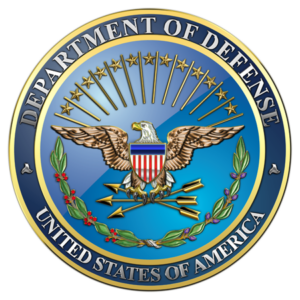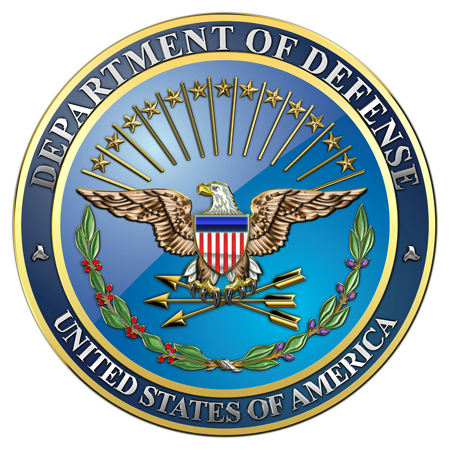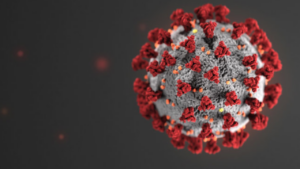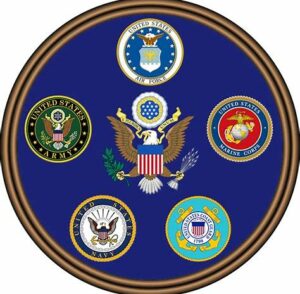By Josh Michaud and Kellie Moss
The domestic response to coronavirus in the U.S. is rapidly expanding. At this point, every U.S. state and territory has declared an emergency, and President Trump has declared the pandemic to represent a national emergency. Yet there are concerns that response capabilities and resources at the local and state levels could become overwhelmed in the coming days and weeks as spread occurs and severe cases outpace the capacities of health facilities. In the past, the U.S. military has sometimes been called on to provide support during a national emergency, and calls for it to play a similar role during the coronavirus response are growing. In recent days, U.S. governors, presidential candidates, and others have asked for military assistance for domestic coronavirus response, and President Trump has stated he is working with states and the Department of Defense to have the military provide additional resources and assets.
 This brief answers key questions about potential U.S. military engagement in the domestic response to the coronavirus. For the purposes of this brief, “military” refers to the armed forces, specifically the active duty personnel and assets of the uniformed military service branches in the Department of Defense (Army, Navy, Air Force, Marines) as well as their reserve forces, including the National Guard. The role and specific information about other U.S. uniformed services including the Coast Guard (part of the Department of Homeland Security) and the U.S. Public Health Commissioned Corps (part of the Department of Health and Human Services) are not reviewed here.
This brief answers key questions about potential U.S. military engagement in the domestic response to the coronavirus. For the purposes of this brief, “military” refers to the armed forces, specifically the active duty personnel and assets of the uniformed military service branches in the Department of Defense (Army, Navy, Air Force, Marines) as well as their reserve forces, including the National Guard. The role and specific information about other U.S. uniformed services including the Coast Guard (part of the Department of Homeland Security) and the U.S. Public Health Commissioned Corps (part of the Department of Health and Human Services) are not reviewed here.
Key Questions
-
Can states call in the National Guard and other parts of the U.S. military?
Local and state governments are expected to be initially responsible for emergency response in their jurisdictions, according the National Response Framework that guides federal, state, and local responses to emergencies. However, when the response capacity at local and/or state government level is felt to be exceeded, governors have the option to request military support by calling on national guard units in their states to mobilize. In fact, governors in almost half of U.S. states (44%) have already activated many state guard units for coronavirus response: The National Guard reports that as of March 19, over 2,000 guard members are assisting in coronavirus response activities in 27 states.
For additional military support beyond the National Guard (with state-level units under the command of their respective governors unless “federalized” by the President), governors go through a separate process (below).
-
Who decides when the U.S. military, beyond the National Guard, becomes involved in domestic emergency response?
While governors can request the help of the U.S. military beyond the National Guard, the decision of whether to provide support lies with the President of the United States or the Secretary of Defense. At the federal level, the U.S. military can become engaged in domestic response in one of two ways:
- One is that the federal agency leading an emergency response can request military support by submitting a Request for Assistance to the Department of Defense (DoD). HHS had been the lead agency in the U.S. response until March 18, when it was announced that FEMA would take over as the lead. Upon receipt of the request from the civilian agency, the Secretary of Defense and other DoD leadership would review the request and evaluate it based on a number of criteria, including whether the requested support complies with existing law, whether the type of support presents a risk to DoD personnel, and what impact meeting the request might have on DoD’s ability to pursue its primary mission of national defense. Once a national emergency has been declared, governors can make the request directly to DoD, without going through the lead Federal agency.
- The other is that either the President or the Secretary of Defense can choose to directly authorize federal military support for the domestic response, including deploying active duty personnel and/or calling in National Guard personnel to federal service.
 3. If the U.S. military becomes involved in the domestic response to the coronavirus, who controls and commands military assets during these efforts?
3. If the U.S. military becomes involved in the domestic response to the coronavirus, who controls and commands military assets during these efforts?
State governors maintain command over state-level National Guard assets and personnel when they are mobilized for state-level responses.
For the federal response, even when the U.S. military becomes involved, leadership of the response remains with civilian agencies and DoD assets are in a support mission. In the case of coronavirus, FEMA is the lead federal agency and with support from HHS as a key operational agency, would work with military commanders to direct resources as needed, along with state and local leaders. On the military side, the Secretary of Defense typically designates one or more responsible officers, specifically one or more of the commanders of the regional combatant commands, to oversee military efforts and ensure they are coordinated with civilian efforts. For this type of domestic civil support operation, ordinarily the officers will be the commander of U.S. Northern Command (NORTHCOM) for the continental United States, Alaska, Puerto Rico, and the U.S. Virgin Islands, and commander of U.S. Pacific Command (PACOM) for Hawaii, Guam, American Samoa, and the Northern Mariana Islands.
If National Guard units are “federalized” by the President during the response, there is a joint military-civilian command structure that is put in place.
-
What U.S. military capabilities and assets could support the domestic response to the coronavirus?
The U.S. military has capabilities in a range of areas that could be called upon in the domestic response to coronavirus. It has significant capabilities and assets to support communications, transportation, infrastructure, engineering, construction, and other technical and logistical areas.
Importantly, the military also has a reservoir of experienced scientists and medical professionals, stockpiles of medical supplies (such as masks and other personal protective equipment, and respirators), and military medical facilities that include deployable, mobile “field hospitals,” permanent health facilities, and two large hospital ships with an estimated 1,000 bed capacity each – the USNS Mercy and USNS Comfort.
-
Are these capabilities available and appropriate to the domestic civilian response to coronavirus?
Even though the military has significant capabilities as described above, not all resources are available for civilian use, and not all are likely to be appropriate for civilian coronavirus response needs.
Both Secretary of Defense Esper and military officials including the Joint Staff Surgeon (the highest ranking military medical official) have cautioned against overestimating the capabilities that the U.S. military can provide in coronavirus response. The Joint Staff Surgeon has stated DoD has “less than 3% of the number of hospital beds that the private sector has” and has only 36 hospitals in the U.S., most of which are not well suited for “caring for large numbers of contagious patients.” Military doctors are trained primarily to address the health needs of a young, healthy population of active duty personnel, not necessarily communicable illnesses that are a risk primarily to older populations and those with pre-existing chronic medical conditions (though military doctors may provide such care to service members, retirees, and their dependents).
The military has the capability to deploy/construct temporary field hospitals, as well as retrofit or otherwise prepare other facilities for use as makeshift hospitals. The Navy also has two large hospital ships, each with 1,000 bed capacity. Even so, military field hospitals and hospital ships have been designed and used primarily for humanitarian, trauma and battle injury care rather than infectious disease care, and usually provide short term care, with patients typically discharged quickly to other health facilities. Secretary Esper has stated that the hospital ships might provide care for trauma cases to help alleviate pressure on U.S. hospitals and free beds for infectious disease cases when deployed as part of the domestic coronavirus response.
Another consideration for deployment of military medical resources such as field hospitals and hospital ships is who will staff these units once they are deployed. With concerns about shortages of civilian health workers already, and the continued need for DoD medical professionals to focus on military needs, it is unclear where additional health worker capacity will come from to staff multiple field hospitals and hospital ships.
-
What military capabilities have been called on thus far?
In addition to the National Guard mobilizations noted above, as of March 18 Secretary of Defense Esper has directed the department to release some supplies in support of the domestic civilian response, including 5 million masks and other personal protective equipment, along with 2,000 deployable ventilators. Secretary Esper has also stated the Navy is in the process of readying the hospital ships, with plans to deploy the USNS Comfort to New York harbor and the USNS Mercy to a location on the west coast. Both are expected to deploy before the end of March.
In remarks during a recent press conference, President Trump commented that states have also requested the U.S. military help by standing up temporary field hospitals, though no specific information about when and where these hospitals will deploy is currently available.
New York Governor Cuomo specifically asked for the Army Corps of Engineers to be used to convert, retrofit, and upgrade existing civilian facilities to serve as makeshift hospitals, and Secretary Esper has said that he will “get the Corps of Engineers up there soonest to assess the problem and see how we can help out.” Before Secretary Esper’s commitment on March 18, a spokesperson for the Corps stated they are “prepared to assist” but have not yet been assigned a mission.
-
Can the U.S. military be used to enforce quarantines or take on other policing or law enforcement activities during the domestic coronavirus response?
There are restrictions on federal military actions and responsibilities in domestic response circumstances, which are outlined in various guidelines and laws, including the Defense Support of Civil Authorities doctrine and DoD Directive 3025.18 on Defense Support for Civil Authorities, as well as several sections of the U.S. Code, including Military Support to Civilian Law Enforcement Agencies and the Posse Comitatus Act. These prohibit the federal military from serving in any law enforcement or policing role. Restricted activities include: “search, seizure, arrest, apprehension, stop and frisk, surveillance, pursuit, interrogation, investigation, evidence collection, security functions, traffic or crowd control.” An exception to these restrictions can be expressly authorized by the President (through invocation of the Insurrection Act) or granted through an act of Congress. These restrictions do not apply to state-level National Guard efforts under governors’ orders.
Under extreme circumstances some states allow governors to declare “martial law” in their states, which would have the effect of replacing civilian authority with military authority, and also the possibility of suspension of certain civil liberties. California Governor Newsom stated, “If you want to establish a framework of martial law, which is ultimate authority and enforcement, we have the capacity to do that, but we are not feeling at this moment that is a necessity.” Similarly, the President in theory has the ability to establish martial law at the federal level; however, this power is highly contested, and there is no indication this is currently being considered for the coronavirus situation.
-
Could U.S. military medical resources deployed for civilian response affect the ability of the military to meet the needs of its own members and dependents?
DoD prioritizes the health of its personnel and dependents and in the past has sought to minimize the risk for military members posed by infectious diseases as much as possible. DoD is concerned about exposure to and the spread of COVID-19 among its personnel, reporting 37 confirmed cases as of March 17 (18 among military personnel, 13 among dependent family members, 3 in civilian employees, and 3 in contractors).
Military officials have expressed concerns about military medical resources being redirected from their current tasks. With force health protection a primary objective for U.S. military medical resources, decisions about their use for domestic civilian response will weigh the potential effects on the military’s efforts to address the health of its own members and dependents.
Likewise, many health care workers who serve in reserve units of the armed forces, including the National Guard, have civilian jobs in health care. Calling them up to reserve duty would remove them from their civilian role which might negatively affect civilian response, so careful consideration of the proper role for health care workers called up for service is necessary. VTN

Josh Michaud is an associate director for Global Health Policy at the Kaiser Family Foundation, where he helps guide and oversee the Foundation’s research and analysis in the area of global health. Dr. Michaud is an authority on a range of global health policy issues including financing, the roles and activities of U.S. agencies and multilateral organizations, health diplomacy, and global health security and emerging diseases. Dr. Michaud is also a Professorial Lecturer at the Johns Hopkins University School of Advanced International Studies (SAIS) in Washington D.C., where he teaches courses on global health policy, public health and development. In the past, Dr. Michaud worked as an infectious disease epidemiologist with the U.S. Department of Defense and the Johns Hopkins University School of Medicine. He holds a Ph.D. in International Health Policy from Johns Hopkins SAIS, an M.A. in Applied Economics from Johns Hopkins University, and an M.H.S. in Infectious Disease Epidemiology from the Johns Hopkins University Bloomberg School of Public Health.
Kellie Moss is an associate director of Global Health & HIV Policy at the Kaiser Family Foundation, where her work focuses on the U.S. government’s role in global health. Her recent research and policy analyses have focused on non-governmental organizations’ engagement in U.S. global health efforts; the Department of Defense’s role in global health and, more specifically, its infectious disease efforts; family planning and reproductive health; and maternal and child health.
Prior to joining the Foundation, Ms. Moss held positions at the Congressional Research Service and the U.S. Department of Health and Human Services, and earlier in her career, she served as an intern at the Department of State and in a leadership office on Capitol Hill. Ms. Moss holds an MPhil in Social Anthropology from the University of Cambridge and a Master of International Business degree from the University of Sydney



 3. If the U.S. military becomes involved in the domestic response to the coronavirus, who controls and commands military assets during these efforts?
3. If the U.S. military becomes involved in the domestic response to the coronavirus, who controls and commands military assets during these efforts?

